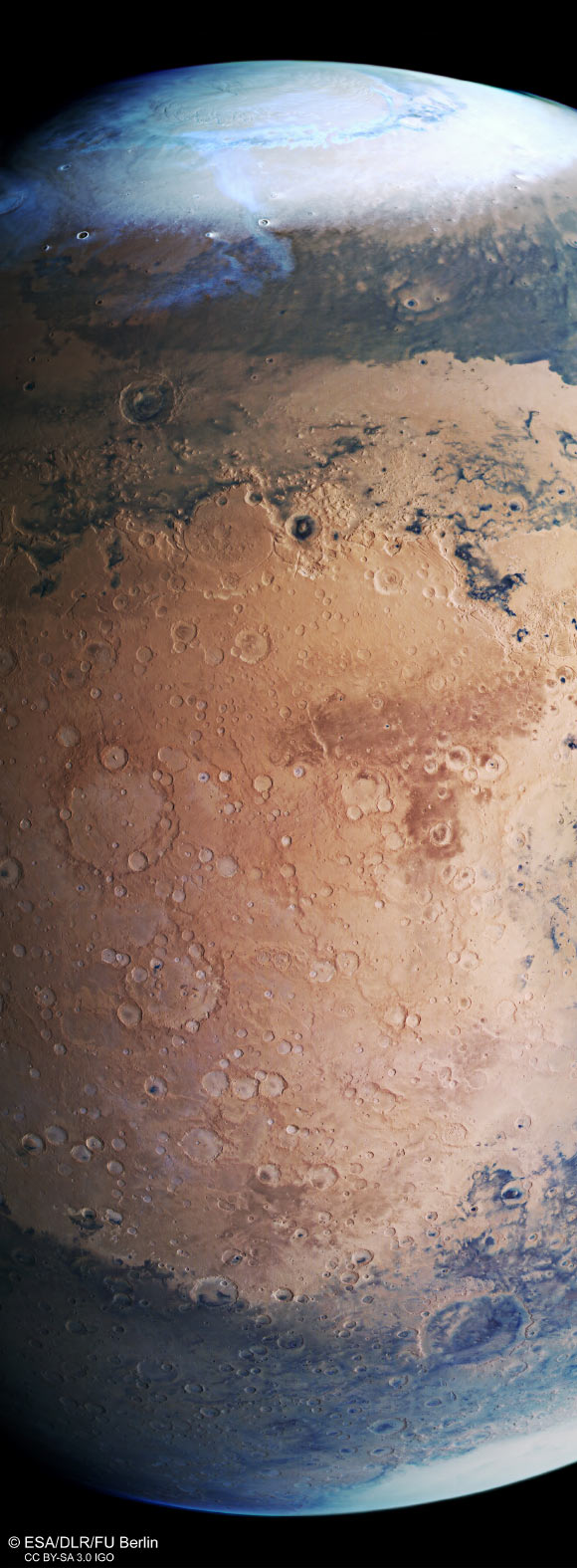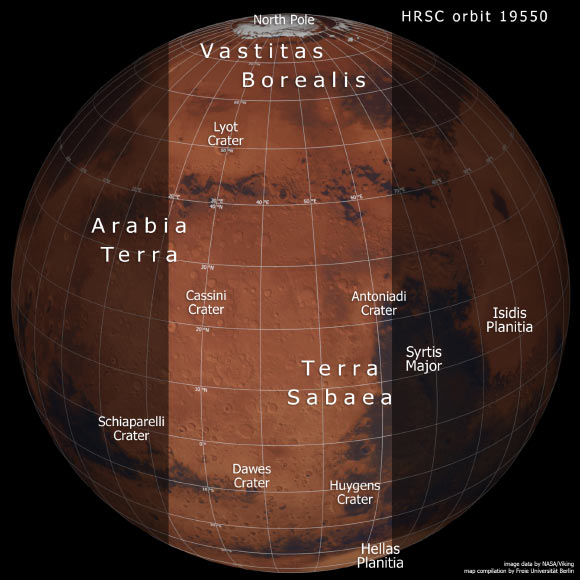The High Resolution Stereo Camera onboard ESA’s Mars Express orbiter captured this detailed image of the Red Planet on June 17, 2019.

This image from ESA’s Mars Express shows a beautiful slice of the Red Planet from the northern polar cap downwards, and highlights cratered, pockmarked swathes of the Terra Sabaea and Arabia Terra regions. It comprises data gathered on June 17, 2019. This image was created using data from the nadir and color channels of Mars Express’ High Resolution Stereo Camera. The nadir channel is aligned perpendicular to the surface of Mars, as if looking straight down at the surface. North is up. Image credit: ESA / DLR / FU Berlin.
“Visible at the top of the frame is Mars’ north pole: this is permanently covered by a cap of frozen water and carbon dioxide, which thickens in the northern Martian winter and thins in the summer,” the ESA researchers said.
“The northern polar cap is encircled by bright, eye-catching clouds, tendrils of which snake downwards from the polar region to obscure some of the planet’s northern hemisphere.”
“This patch of Mars is a mix of different tones and colors — a reflection of the different chemical and physical characteristics of the material that makes up the surface.”
Mars’ two hemispheres are very different in a number of ways.
This split is known as the Martian dichotomy, and remains one of the greatest mysteries about the planet.

This image shows a slice of Mars from the northern polar cap downwards, and highlights cratered, pockmarked swathes of the Terra Sabaea and Arabia Terra regions. Image credit: NASA / Viking / FU Berlin.
“The northern hemisphere sits several miles lower than the southern, and the two are separated by a distinctive, rugged boundary formed of canyons, cliffs and scarps, fractures, valleys, flat-topped mounds known as mesas, and many other features,” the scientists said.
“The northern hemisphere is also characterized by low-lying plains that are largely unmarked by impact craters and thus thought to be relatively young, while the southern hemisphere is ancient, showing signs of intense cratering. This separation can be seen in the new image.”
“The dark and dusty young plains of the northern hemisphere sit just below the white northern cap; these meet and merge with a prominent escarpment that slices across the planet, creating a dark scar on the tan-colored surface.”
“Below this, in tones ranging from rusty orange to pale butterscotch, are the southern highlands, featuring more craters than it is possible to count.”
The Mars Express image shows two large regions: Arabia Terra (towards the upper left) and Terra Sabaea (to the middle and lower right, forming the main bulk of the highlands).
The light region stretching out of frame to the bottom right is Hellas Planitia, a plain that is home to the Hellas basin: one of the largest basins identified on Mars — and, in fact, in the Solar System — at 1,430 miles (2,300 km) across.







